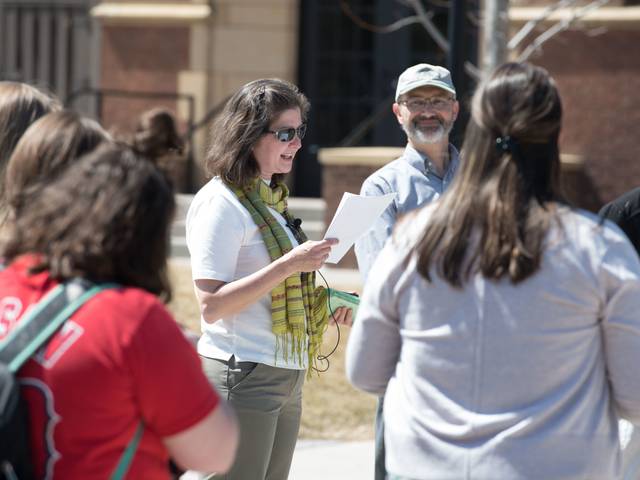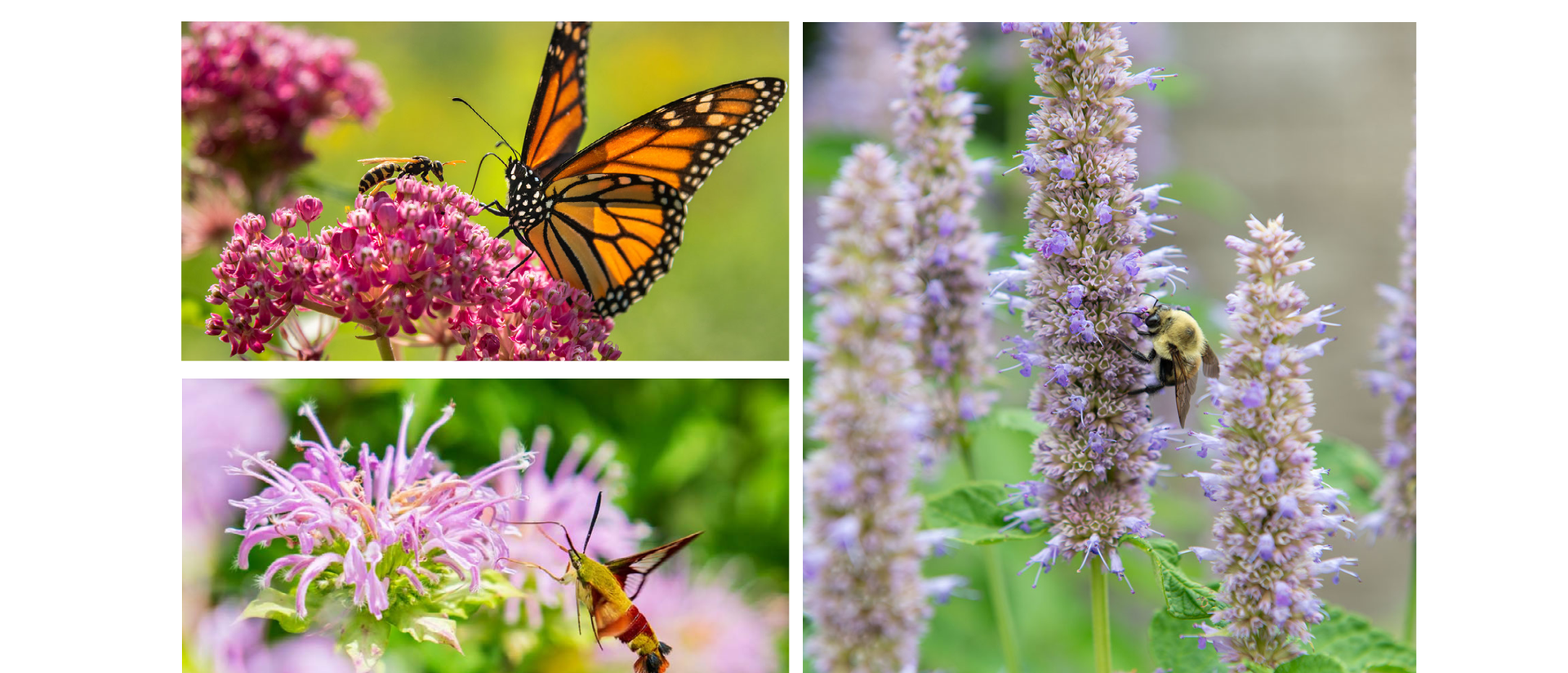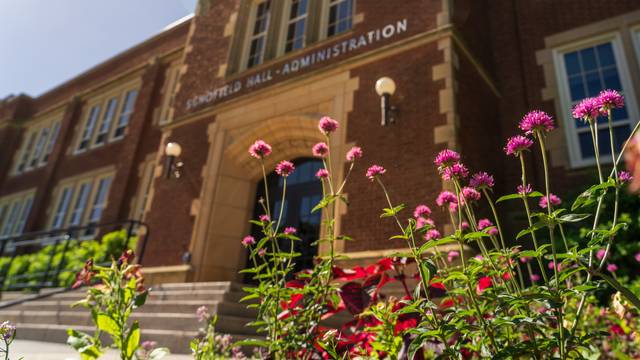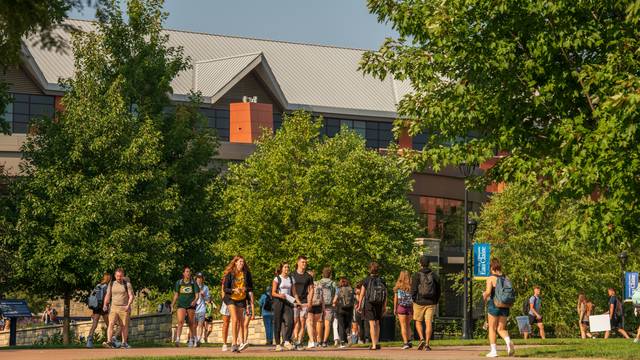Protecting pollinators is an emerging a national priority, which organizations and individuals across the nation can support. At UWEC we use a variety of tactics to protect and enhance pollinator habitat on campus. While UWEC does not directly participate in No Mow May, our Landscape Architect Daria Hutchinson and our new Grounds Supervisor Jennifer Allen have highlighted some of these pollinator-friendly tactics below.

Landscape Architect Daria Hutchinson teaches students about trees on campus
Creating Pollinator Habitat
According to our landscape architect Daria Hutchinson, we have plants on campus selected specifically “to feed native bees and honeybees early in the season.” These include but are not limited to willow shrubs, Common Hop trees, Serviceberry, Blackhaw Viburnum, Daffodils, Muscari, and Crocus. UWEC is always looking to protect our native pollinators and continue sustainability efforts. For example, the UWEC grounds crew hand weeds all of the non-turf areas on campus, such as flower beds and around trees, so that we can avoid the use of pesticides in those areas.
Around 75% of the trees on campus are native to Wisconsin and provide great habitat for a variety of pollinators and other species on campus. Some of Putnam Park’s 230 acres is also prairie space, located near Chancellors Hall on upper campus. The entire park is a great space for pollinators and wildlife habitat, particularly the area behind the Davies parking lot, which is a source of mud for many native bee species that use it to hatch new offspring. Our Barron County campus also maintains a prairie, which is a great habitat for native pollinators.

Pollinators at UWEC
Why doesn’t UWEC formally participate in No Mow May?
The City of Eau Claire is participating in No Mow May for the first time this April. Many other individuals and businesses in the area are also joining the effort. No Mow May was started in the UK and eventually gained a foothold right here in Wisconsin, where the effort has steadily expanded. The purpose of No Mow May is to allow flowers to bloom in your lawn to help pollinators or to put it simply, save the bees.
UWEC does not participate in No Mow May to protect the integrity of our turf grass. While some turf lawns are not utilized, protecting the grass at UWEC is important because it provides space for students to be outdoors; studying, playing frisbee, and other outdoor activities all require this open space. As Daria states:
“May is a fickle month in Wisconsin. We have seen snowfall as late as the second week of May or had a very warm April leading to a full-on growth surge during May. We apply a slow-release fertilizer to the turf and aerate across campus as soon as possible to encourage turf grass growth to compete with invasive weeds like dandelion, creeping charley, clover, and crab grass. If we did not mow in May, those weeds would out-compete the turf grass and cause further issues.”
A certified commitment to our Environment
Our campus is certified as a Tree Campus USA, and as an Accredited Arboretum through ArbNet. Additionally, UWEC is a National Wildlife Federation Certified Wildlife Habitat, highlighting our commitment to providing animals with food, water, and habitat on campus. We also plant milkweed on campus to benefit monarch butterflies and are certified as a Monarch Waystation.
Jennifer Allen, UWEC’s new grounds Supervisor, is excited about the possibility of expanding these certifications to include Bee Campus USA.
“Bee Campus became a great project I got to be involved with at UW-River Falls, I’d love to share my experiences with this campus and see if it’s something we’d like to eventually pursue.”


